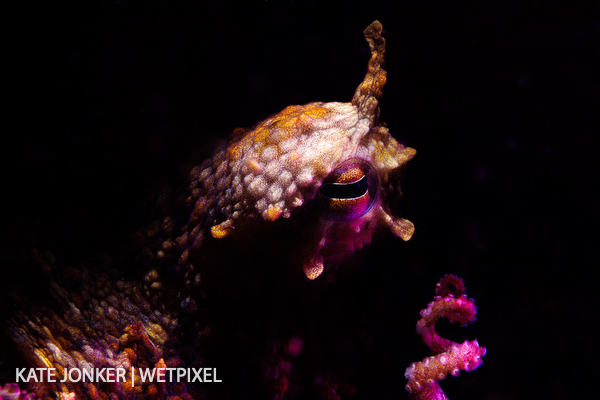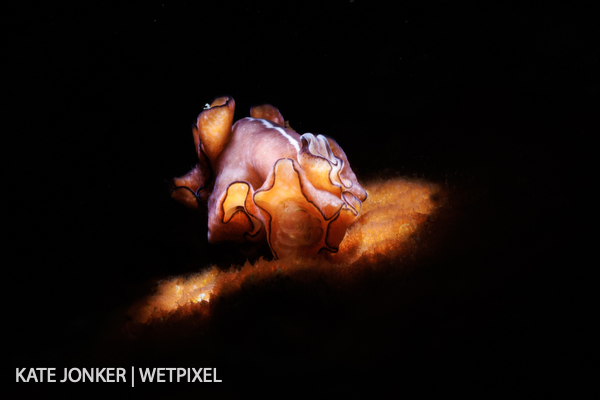Review: Marelux SOFT Pro Snoot By Kate Jonker
Review of the SOFT Pro from Marelux
By Kate Jonker
The SOFT Pro is the latest snoot from Marelux, a new company that has quickly made a name for itself in the underwater photography industry. In addition to producing high-quality underwater housings for mirrorless and video cameras, Marelux has also developed a range of other innovative products including snoots, hydrophones and monitors.

The SOFT Pro is the latest addition to Marelux’s product line, and it’s a game-changer for underwater photographers. This more compact and feature-rich model builds on the success of the original SOFT, which was introduced to the market towards the end of 2021.
SOFT Pro at a glance
Marelux products are well-made, finished, and robust, and the SOFT Pro is no exception. It has many features that are designed to make snooting fun and creative.
- Length: 155mm
- Weight on land: 790g (battery weight 25g)
- Weight in water: 210g (plus 125g buoyancy sleeve)
- Depth rating: 100m
- Working distance (in water): 150mm from the end of the flash tube to the subject
- Spot size: 3mm – 50mm
- Spot size is adjusted with an aperture dial.
- White aiming light with adjustable brightness
- Red aiming light with adjustable brightness
- Aiming lights automatically switch off when the strobe fires.
- Length of time that the aiming light stays on for when the strobe fires can be adjusted
- Neoprene buoyancy cover for the flash tube
- Ball mount attachment with screws, washers, and Allan key
- Comes with spare o-rings for the battery compartment.
- Sturdy rubber protection cap for the end of the snoot
- Several optional extras for creative lighting are also available for purchase
Initial impressions
I was lucky enough to get my hands on the SOFT Pro recently and have been putting it to the test on dives in my hometown of Gordon’s Bay, just outside Cape Town, South Africa.
One of the first things I noticed about the SOFT Pro was its size - it is 5.5cm shorter and 182g lighter than its predecessor, which makes it much more portable and easier to use underwater. The SOFT Pro is made from scratch-resistant, black anodized aluminum, and is depth rated to 100m. It also comes with a thick neoprene sleeve that fits snugly over the flash tube, adding extra buoyancy underwater.

The SOFT Pro features a diffuser that softens the light of the strobe before it is narrowed and channeled down the flash tube. Inside the flash tube, optical lenses condense the light, producing a bright, snooted light of excellent quality. To attach the SOFT Pro to your strobe, you will need to purchase a SOFT Dock designed specifically for your model of strobe. This costs extra but does mean that if you change strobes, you only need to purchase the SOFT Dock for your new strobe and not a new SOFT Pro.
Constructed from black anodized aluminum, the SOFT Dock fits securely onto the front of the strobe, providing a sturdy and stable base for your SOFT Pro. Attaching the SOFT Pro to the dock is a breeze, simply align the two dots and turn until you hear a satisfying click, indicating that it is securely locked in place. This ensures that your SOFT Pro will stay securely attached. And if you ever need to remove the SOFT Pro from the dock, it is easy to do so by pressing the lock and twisting it off.
One thing to keep in mind is that the SOFT Pro has its own focus light, which requires a 18350 battery, which is not included. This is not a common battery size in my country, and I had to order some online. If you plan on using this snoot as soon as it arrives, make sure you order batteries well in advance if they are not easily available where you live.

Field testing the SOFT Pro
I found the compact size of the SOFT Pro to be a pleasure to use while underwater. As someone with short arms, I found it easy to reach the end of the snoot to move it into position. While it was a bit heavier than most regular snoots which tend to be made of less robust material, I attached it directly to a jumbo float arm to assist with balance and buoyancy.

An in-built aiming light
One of the standout features of the SOFT Pro is its in-built aiming light. Unlike most other snoots that rely on the strobe’s focus light, the SOFT Pro’s bright aiming light made it easy to see where the strobe light would fall. The ability to change the intensity of the aiming light by rotating the power button came in very handy in shallower, bright water and I had no problem finding the aiming light in my viewfinder when set at its maximum brightness.

Additionally, the ability to switch the aiming light from white to red light with the press of the power button was a game-changer for photographing timid fish who tend to be frightened by constant white light. They appeared not to notice my red light at all and stayed still long enough for me to capture some nice shots.

Another great feature of the SOFT Pro is the option to choose whether to keep the aiming light on for 0.2s or 1.2s after the strobe has fired, which was a huge plus for photographers who enjoy shooting at slow shutter speeds.

The aiming light made it easy to see exactly where the strobe light would fall and what the actual size of the spot was going to be, allowing me to take many more “keepers” than usual.

Say goodbye to masks!
As the size of subjects can vary greatly, it’s important to be able to change the beam diameter accordingly, to ensure that only the subject is lit. This is where the Marelux SOFT Pro excels.

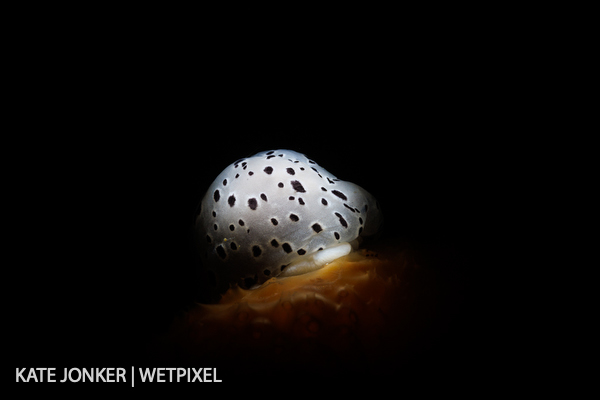
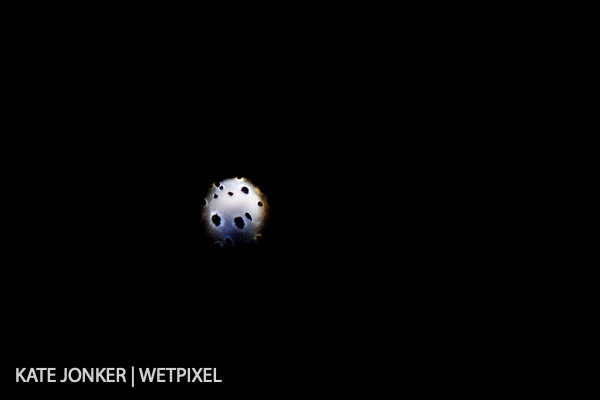
Unlike other snoots that require masks with varying size holes, the SOFT Pro uses an internal aperture that can be adjusted by turning a dial. This allowed me to regulate the diameter of the beam of light being emitted without the need to change masks. At a working distance of 150mm between the end of the flash tube and the subject, it can produce a spot of between 50mm and 3mm. This is incredibly impressive and made snooting so much easier.
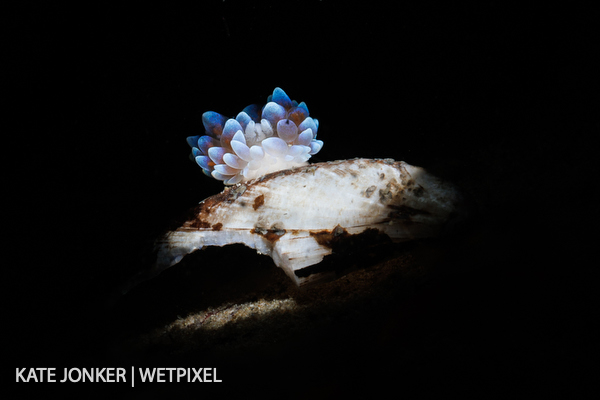
On my dives, I was able to easily turn the dial with my right hand while still looking through my viewfinder. This meant that I could control the size of the beam without moving my head or the SOFT Pro. Additionally, without the need to change masks, my snoot stayed firmly in position throughout the dive, except when I needed to bring the end of the SOFT Pro closer to the front of my housing when using a diopter.

The SOFT Pro also offers several optional extra accessories for creative underwater photography, such as color filters, diffusers, and a dome diffuser that attach to the SOFT Dock. There is also an extension lens that attaches to the front of the flash tube, increasing the working distance of the snoot for subjects that are hard to reach.
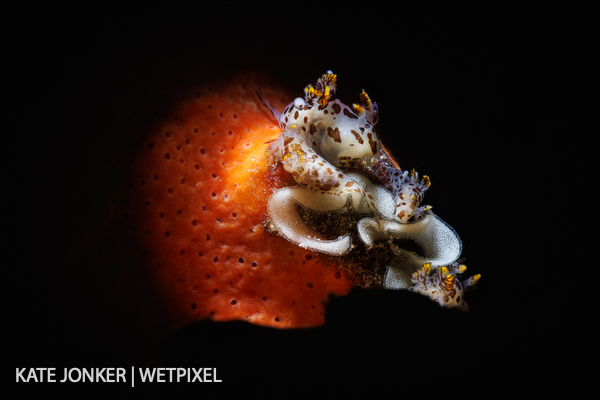
Conclusion
I am thrilled to share that the Marelux SOFT Pro snoot is truly a game-changer for underwater photography. With its advanced features and durable design, it is the perfect tool for capturing stunning shots. Not only is it built to last, but it is also easy to pack and use on any dive, increasing your chances of snooting success. After using the SOFT Pro on multiple dives, I can confidently say that investing in this snoot is a smart decision that will serve you well for years to come.
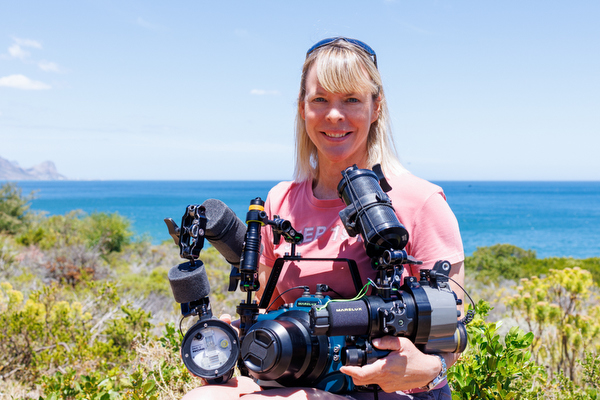
About the Author
Kate Jonker is an underwater photographer and writer based in South Africa. She is an underwater photography coach, a dive guide, and a dive boat skipper for Indigo Scuba in Gordon’s Bay, Cape Town, South Africa and leads dive trips across the globe.
Kate is a Marelux Ambassador
She is also on Instagram and Facebook.
The Marelux SOFT Pro was supplied to Kate Jonker by Marelux for the purpose of this review.
Other images photographed with the Marelux SOFT Pro
